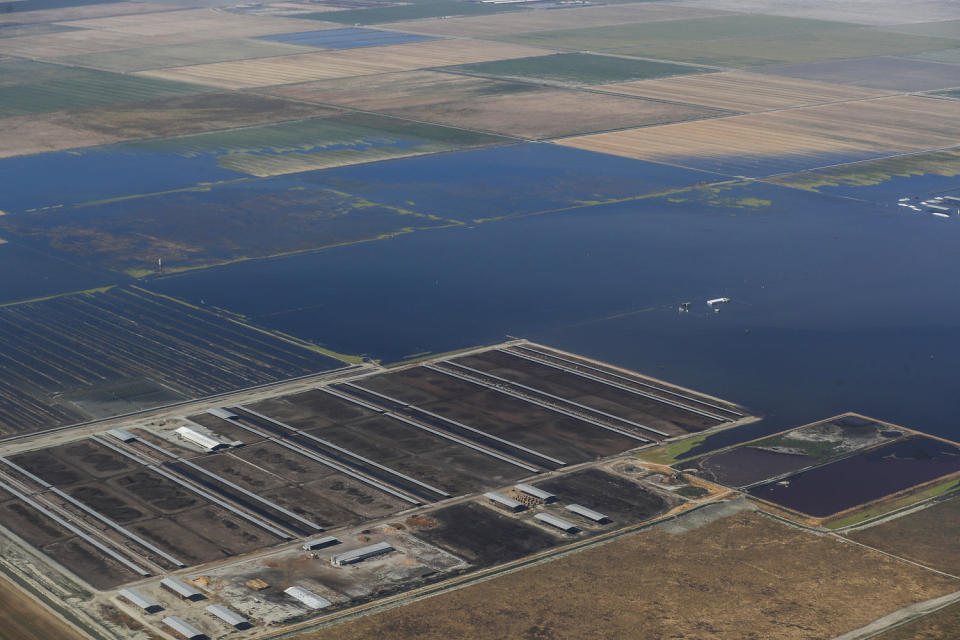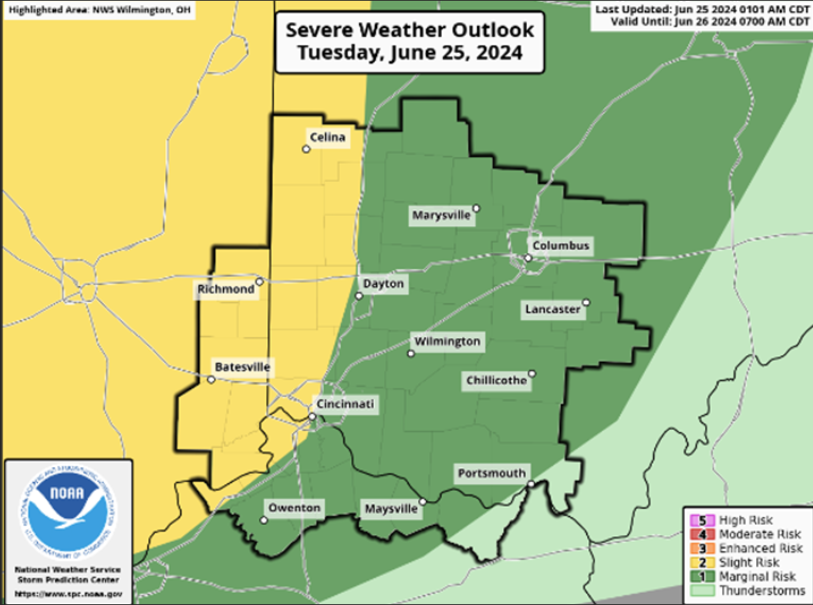As California braces for another powerful atmospheric river storm on Sunday, Tulare Lake continues to remind visitors of the powerful consequences these extreme storms can have.
Floodwaters in the lake, which formed after about a dozen atmospheric river storms hit California in 2023, are still stretching across thousands of acres of premier farmland more than nine months after the resurrection of the “ghost lake,” as some took to calling it.
This summer, the lake’s stagnant waters became a hotspot for wild birds and caused an outbreak of avian botulism that forced wildlife officials to patrol on airboats daily and collect hundreds of dead birds. Flooded vehicles and telecommunications equipment were submerged along the bottom of the lake bed, and farm operators couldn’t access their fields.
The lake’s continued presence in this corner of the Central Valley highlights how the environmental impacts of last year’s extreme rainfall are still reverberating across California. Storms this weekend could bring extreme precipitation to other parts of the state, but most flood impacts aren’t expected to linger as long.
Today, the Tulare Lake is shrinking rapidly, even amid recent rainfall. As of Thursday, water covered about 4,532 acres of farmland, according to Justin Caporusso, who handles public relations for Kings County, where the floodwaters settled. That means the lake is less than 1/20 of its peak size last year, and life is approaching normal for those living nearby.
Sgt. Nate Ferrier, of the Kings County Sheriff’s Department, who visited the lake in late January, said most of it has been cleaned up.
“The farming community was already back to life,” he said. “There were tractors everywhere.”
More than a century ago, the lake was a natural feature of the southern San Joaquin Valley before settlers dug irrigation ditches to reroute water and drain the landscape for farming. Last year, floodwaters filled the Tulare Basin because reservoirs could not handle intense snowmelt runoff from the Sierra Nevada after a series of storms.
This week’s atmospheric river storms — which are to be punctuated by a significant storm Sunday — are unlikely to have much impact on the Tulare Lake, Caporusso said in an email. Reservoirs upstream of the lake have the capacity to handle the precipitation, and the California Department of Water Resources found that the southern Sierra has about 45% as much snow as it normally does this time of year.
But the storm is expected to have widespread impacts elsewhere in the state, including near Los Angeles. An atmospheric river is expected to arrive on Sunday and linger through Tuesday, according to the National Weather Service in Los Angeles. Along the central coast and its inland valleys, the weather service said it expects “MAJOR amounts of rain” and “major hydrologic problems.”
“People need to start preparing now,” the forecasters urged.
Daniel Swain, a climate scientist at UCLA and the National Center for Atmospheric Research, said soils are saturated from San Francisco to San Diego, which means heavy rainfall could rapidly trigger flooding.
“We’re expecting a very significant event with potential for widespread and potentially serious flooding in Southern California,“ Swain said in a YouTube briefing.
Swain said a marine heatwave sitting off California’s shore has likely helped boost thunderstorm activity this season in California and could be causing heavy rainfall during “localized torrential downpours.” Swain said four communities — San Francisco, Ventura, Long Beach and San Diego — have experienced extreme precipitation that caused urban flash flooding and that’s likely connected to those warm ocean waters.
“I would actually expect this to happen somewhere again between San Francisco and San Diego because of this upcoming storm event,” Swain said. “If this happens somewhere, that’s where there is likely to be immediate and potentially serious flooding.”

It will be the second atmospheric river in a week’s time. A storm on Wednesday required several rescues and backed up traffic.
Atmospheric rivers are plumes of moisture that travel hundreds of miles across the Pacific Ocean. The storms hitting California now are referred to as “Pineapple Expresses” because their moisture originates from waters near Hawaii.
Atmospheric rivers can be main drivers of precipitation for the West Coast, and they cause more than $1.1 billion in yearly flood damage on average, according to research published in 2022 in the journal Scientific Reports. About 84% of flood damage in Western states is associated with atmospheric rivers, research suggests.
Scientists think climate change is increasing the potency of these storms. A warmer atmosphere can absorb more water vapor, which gives the storms the capacity to deliver more extreme precipitation.
This article was originally published on NBCNews.com
Signup bonus from





